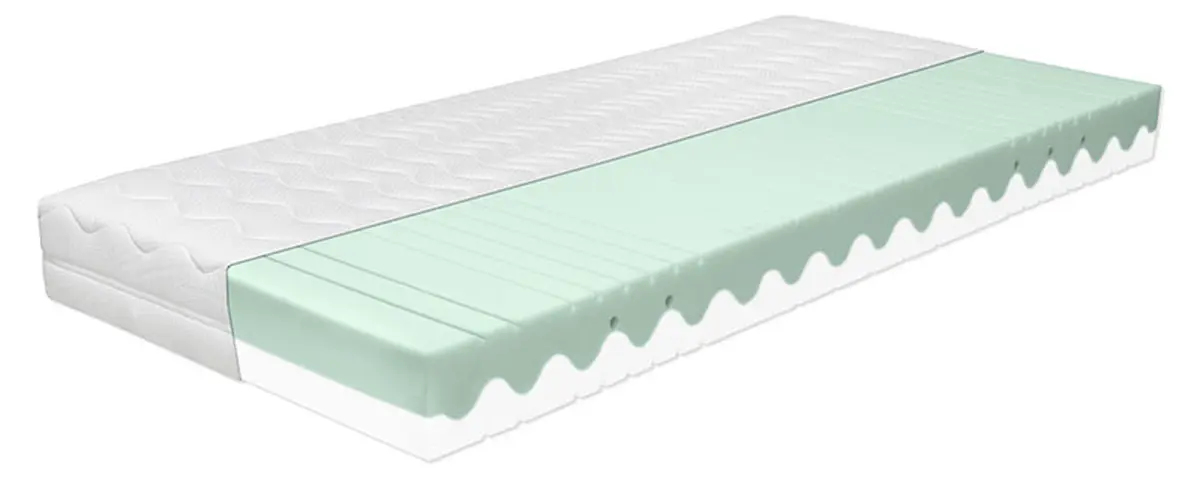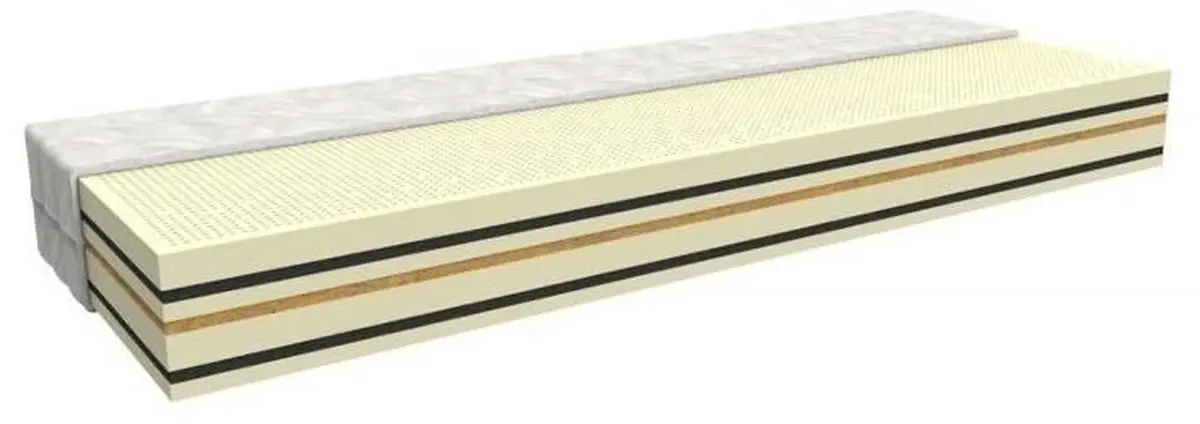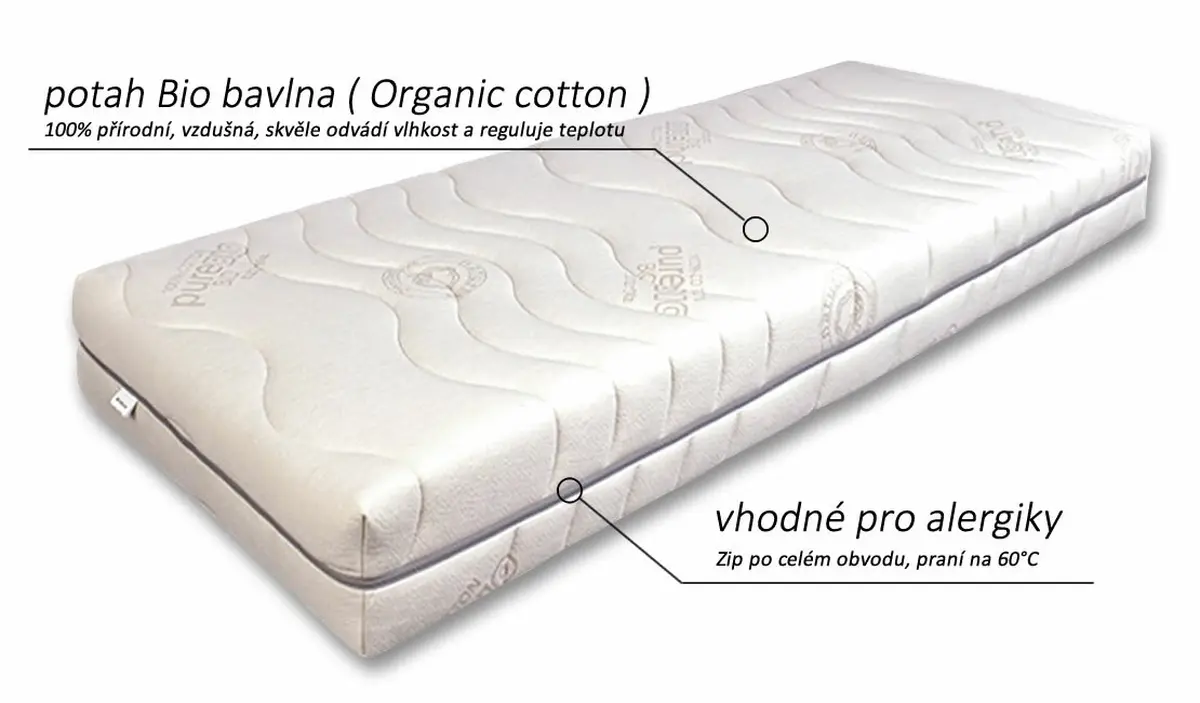Cotton mattresses
Mattresses are an essential part of everyday life, as the quality of our sleep depends not only on our physical but also on our mental health. Choosing the right material plays an important role in ensuring comfort and healthy sleep. Among the various materials used to make mattresses is cotton, which has come to the fore again in recent years thanks to its natural properties and ecological origin. As a natural raw material, cotton boasts not only its durability, but also its hypoallergenic and breathable properties, qualities appreciated by many users.

The  trade mark POTEMA® defines the branded technology concept of a professionally qualified Carpet Service® implementation company focused on the regular maintenance, cleaning, disinfection, impregnation of synthetic, natural, wool, silk and American-made mattresses, beds and textiles. This branded concept delivers the utmost professionalism in full synergy with maintaining ethical, environmental and quality performance standards, including a contractual guarantee of contractor services.
trade mark POTEMA® defines the branded technology concept of a professionally qualified Carpet Service® implementation company focused on the regular maintenance, cleaning, disinfection, impregnation of synthetic, natural, wool, silk and American-made mattresses, beds and textiles. This branded concept delivers the utmost professionalism in full synergy with maintaining ethical, environmental and quality performance standards, including a contractual guarantee of contractor services.
Cotton mattresses are a great choice for anyone looking for comfort, natural materials and hypoallergenic properties. Their benefits such as breathability, environmental benefits and durability make them an ideal choice for people who prefer natural products. Although they can be a bit more expensive and heavier, investing in a quality cotton mattress is worth it by ensuring a healthy and comfortable sleep.
History and origins of cotton
Cotton is one of the oldest materials used by humans. Its origins date back to the 5th millennium BC in what is now Pakistan and Mexico, where it was grown and used to make cloth. In the 18th century, cotton spread around the world thanks to the Industrial Revolution and the rapid growth of the textile industry. Gradually, it came to be used in furniture and bedding products, including mattresses, where its breathable and natural properties became valuable assets for ensuring comfort during sleep.
What is a cotton mattress?
A cotton mattress is a type of mattress where either the entire inner core or the mattress layer is made up of cotton material. Cotton is often used in combination with other materials, such as latex or coir, to maintain optimal properties for body support and comfort. On the market, we can find both 100% cotton mattresses and mattresses where cotton is used, for example, as a top layer to ensure a pleasant feeling in contact with the skin.
Properties of cotton
Cotton is a natural fibre that is highly breathable, soft to the touch and hypoallergenic. These properties are key to a good night’s sleep and the longevity of the mattress. Cotton fibre is lightweight but also very strong, meaning that a cotton mattress can withstand daily use without rapid wear and tear.
Durability
Cotton has a natural ability to let air through, which helps regulate temperature during sleep. The breathability of cotton means that the body stays cooler in the warmer months and warmer in the colder months. This property makes cotton an ideal material for mattresses as it prevents overheating and sweating.
Hypoallergenic properties
Thanks to its hypoallergenic nature, cotton is also suitable for people with allergies and sensitive skin. Cotton mattresses are less prone to dust and dust mites, which helps prevent allergic reactions.
Natural strength and durability
Cotton is naturally strong and resistant to wear and tear. Cotton mattresses can last for many years if properly cared for. Its fibers also conform well to the shape of the body, providing ample support for the spine and proper posture while sleeping.

Benefits of cotton mattresses
Cotton mattresses have many advantages that differentiate them from mattresses made of synthetic materials or foams. These advantages include:
Environmental benefits
Cotton is a renewable and biodegradable material, which means its production and disposal has less impact on the environment. Unlike synthetic materials, which can contain chemicals and put a strain on the planet during production, cotton is an eco-friendly choice.
Productivity and comfort
Thanks to the breathability of cotton, mattresses “breathe”, ensuring comfort throughout the night. Cotton also wicks away moisture quickly, preventing the build-up of sweat and the formation of unpleasant odours. For people with problematic skin or allergies, this can mean a significant improvement in sleep quality.
Hypoallergenicity
Cotton mattresses are suitable for allergy sufferers due to their inherent hypoallergenic nature. Natural cotton mattresses do not tend to accumulate allergens such as dust mites, mould or bacteria.
Long life
Cotton is resistant to wear and tear and its fibres remain strong even after prolonged use. Cotton mattresses are thus an investment in long-term comfort and healthy sleep.
Disadvantages of cotton mattresses
Although cotton mattresses offer many advantages, they also have a few disadvantages that are important to consider when choosing one.
Weight and handling
Cotton mattresses can be heavier than mattresses made of foam or other materials, which can make them difficult to handle and move. For routine maintenance, such as turning the mattress, the weight can be a problem.
Price
Cotton mattresses can be more expensive than mattresses made of synthetic materials. The higher price is often due to the cost of quality natural cotton and eco-friendly manufacturing processes. However, the price can be offset by their durability and health benefits.
Less resilient than some synthetic materials
The natural firmness of cotton means that cotton mattresses can be less resilient than latex or foam mattresses, which can be a disadvantage for people who prefer a softer or more resilient surface.

Types of cotton mattresses
There are several types of cotton mattresses, which vary depending on how the cotton is used and what it is combined with. The most common types include:
Full cotton mattresses
These mattresses are made entirely of cotton and often have several layers of cotton on top, providing a firm and stable surface. They are ideal for people who prefer a firmer mattress.
Combination mattresses (cotton and latex)
The combination of cotton and latex is a popular choice as it offers the optimal combination of breathability, hypoallergenic properties and resilience. Latex adds a certain elasticity to the mattress, which increases comfort and body support.
Cotton futons
Futons are of Japanese origin and are traditionally made from cotton. They are very firm, low mattresses that are easy to fold and carry. Futons are suitable for lovers of a minimalist lifestyle and for those who prefer a firmer surface.
How to choose the right cotton mattress
When choosing the right cotton mattress, it is important to consider several factors that will affect your sleep and overall comfort.
Mattress firmness
The hardness of your mattress should be tailored to your preferences and needs. If you prefer a softer mattress, consider a combination of cotton and latex or a mattress with an additional layer of softer cotton. For lovers of firmer mattresses, full cotton mattresses are ideal.
Size and thickness
The size of the mattress should match the size of the bed and the space available in the bedroom. The thickness of the mattress affects not only comfort but also body support, so a mattress with a minimum thickness of 15 cm is recommended.
Hypoallergenic properties
For people with allergies, it is important to choose a mattress that has certificates confirming its hypoallergenic properties. When buying, focus on the quality of the cotton used, such as organic cotton.
Caring for a cotton mattress
Cotton mattresses require proper care to maintain their properties and last as long as possible.
Regular ventilation
While cotton is breathable, it is still important to ventilate the mattress regularly to prevent moisture build-up. Ventilation helps the mattress get rid of any moisture and prolongs its life.
Rotation and turning
It is recommended to rotate the mattress regularly to evenly distribute wear and tear. This will prevent the formation of bedsores.
Using a protective cover
To protect the mattress, it is recommended to use a good quality cover to protect it from dirt. The cover should be removable and washable to keep it clean easily.

Cleaning and regular disinfection of mattresses
The mattress is one of the most important elements of our home, having a major impact on our health, well-being and quality of sleep. When choosing a mattress, we pay close attention to its material, its firmness and its ability to adapt to the shape of the body. Unfortunately, we often forget that we also need to care for and clean the mattress regularly. Although many people don’t realise it, a mattress can become an ideal environment for dust mites, bacteria, mould and other dirt. In this text, we’ll explain why regular mattress cleaning is important, what your options are, and how to choose the best mattress cleaner.
Mattress Vacuuming & Knocking: Professional vacuums with a HEPA filter and HEPA bag must have an electric vibrating knocking head. This technology of KIRBY® / HYLA® vacuum cleaners makes it possible to remove surface spores of mould, mites by dry method from the mattress surface.
Cleaning with special chemical cleaners: Professional antibacterial disinfectants and cleaners from the manufacturer and brand POTEMA® / Dr. Schutz® bring an environmentally friendly, anti-allergenic way to disinfect mattress surfaces.
UV-C Lamp: We recommend entrusting your mattress to industry professionals who have a UV-C germicidal mattress lamp. UV lamps that produce UVC radiation are designed to be used safely on mattress surfaces and other household items. The radiant energy of the UVC radiation acts directly on microorganisms that reside on the surface and top layer of the mattress. The disinfection process usually takes several minutes, during which time the lamp kills up to 99.9% of the bacteria and other harmful organisms present.
OZON: we recommend entrusting your mattress to industry professionals who have the BIO-OZON® vacuum cleaning system. Ozone’s disinfecting properties are due to its ability to oxidize molecules in the cells of bacteria, viruses and other microorganisms. When ozone comes into contact with these pathogens, it disrupts the cell membrane or wall of the microorganism, leading to its decomposition and subsequent death. This process works similarly to the action of conventional disinfectants, but without the use of chemicals, which is beneficial for people who prefer natural and eco-friendly solutions.
In indoor applications such as mattress cleaning, ozone not only kills bacteria and viruses, but also mites, mold spores and other allergens. Its ability to destroy harmful microorganisms without toxic residues makes it ideal for the environment in which we sleep and rest.
Allergens, mould spores, bacteria, viruses and dust mites are not only a hygiene problem in mattresses, but also a health problem. But with proper prevention, maintenance and the right choice of mattress, the risks can be significantly reduced. Even the thickest sheets and blankets cannot protect us from micro-particles. Dust mites or moulds, which often number up to one million and produce allergy-causing faeces that settle in our mouths, noses, eyes, etc. every time we move. In addition to the allergy manifesting as itching, mucous membrane inflammation, bronchitis, asthma and shortness of breath can be added. This condition can be prevented by professional cleaning and deep dry disinfection thanks to UV-C radiation or vacuum ozonation of the mattress with thorough machine vacuuming and above all regular maintenance.